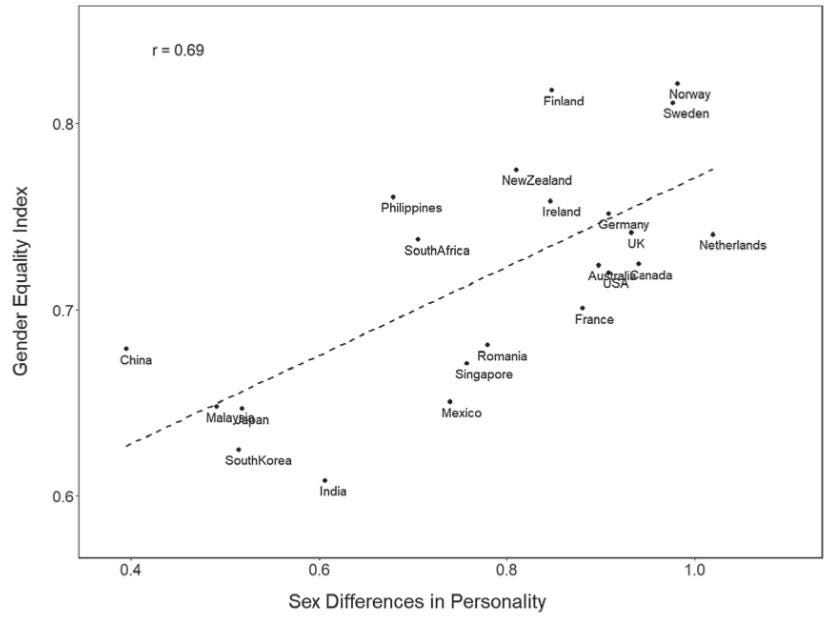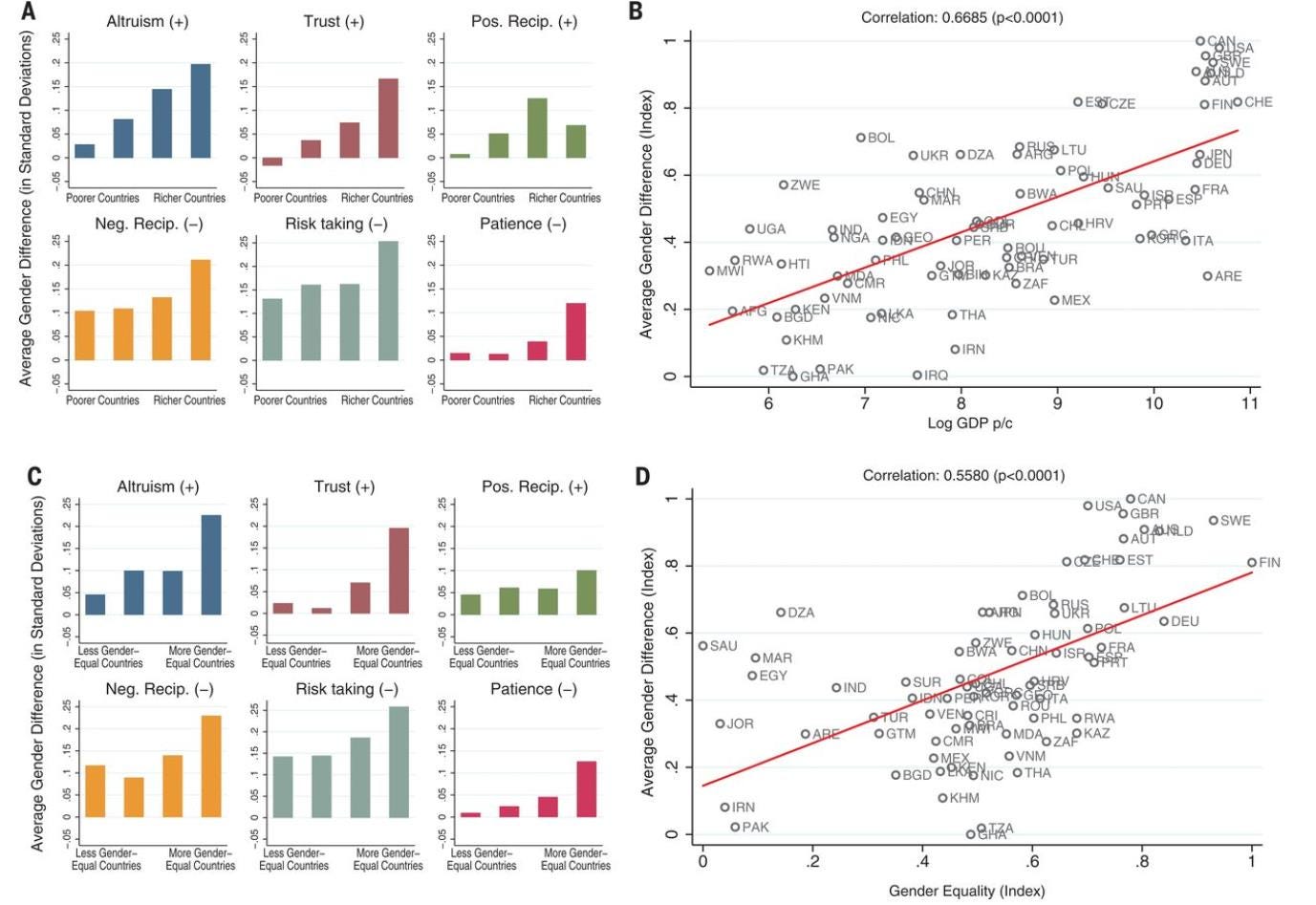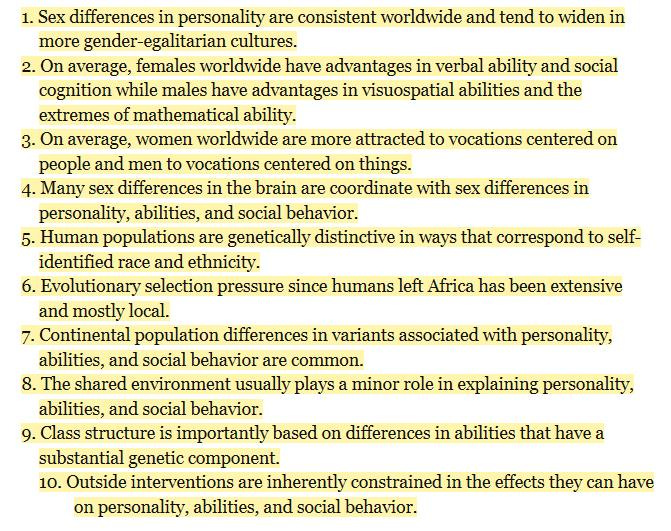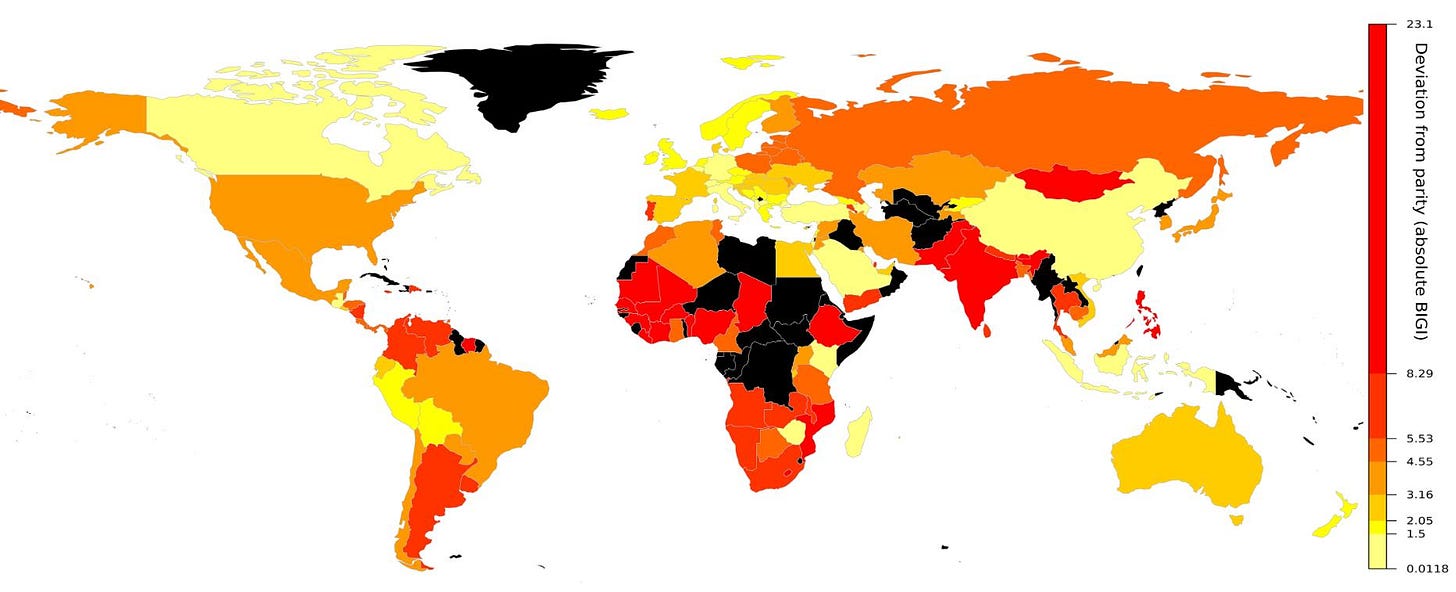In this essay, we’ll look at data on predominant gender prefences, as expressed worldwide.
Predominant Gender Preferences
Many social psychologists who otherwise believe in the principles of evolution seem to reject its application to the male and female human mind when doing so does not fit their ideological predispositions.
Researchers have found that politically liberal people and people without children disproportionately reject the concept of biological sex differences. As one researcher has written:
Our findings were quite clear. Academics, people who identified as politically liberal, and non-parents significantly rejected the idea of evolved behavioral sex differences. This finding was true even when asked about hens and roosters. Further, scholars from the fields of Women’s Studies and Sociology were particularly likely to report that hens and roosters behaved differently from one another primarily due to “nurture.” Is the academy politicized? The data from this study as well as from a more recent study from our lab suggest that the answer to this question is an unequivocal yes. This is deeply troubling not least because the point of the academy, to my mind, is to advance open inquiry in order to help us best understand the world and our place in it.
Research also shows that different ideological values of women, and whether they are mothers or not, greatly affect the preferences of individual women in the workplace.
Researchers also found that women generally are much more willing to sacrifice pay for job security and workplace hours flexibility.
A 2019 Pew survey found that boys are much more likely than girls to prioritize having a lot of money as adults.
A study of personality differences between men and women in 55 countries found that such personality differences were biggest in the most prosperous and healthy countries, where men and women are the most free to do the things they most prefer (men tend to be more competitive, less emotional, and risk-taking than women, and women tend to be more risk-averse, emotional, and nurturing than men). Prosperity brings greater opportunities for self-actualization, and men and women tend to want to express themselves in different ways, which leads to different choices in careers and family roles. The following chart shows how personality differences between men and women tend to be greater as one moves from non-Western to Western cultures.
Researchers have also found that:
Confirming past research, there was a strong correlation between a country’s sex differences in personality and their Gender Equality Index. Additional analyses showed that women typically score higher than men on all five trait factors (Neuroticism, Extraversion, Openness, Agreeableness and Conscientiousness), and that these relative differences are larger in more gender equal countries. We speculate that as gender equality increases both men and women gravitate towards their traditional gender roles.
Using a survey of some 80,000 people across 76 countries, other researchers found that for a variety of preferences the differences between the genders gets larger the greater is economic development and gender equality in a given country. As the researchers concluded, “In sum, greater availability of material and social resources to both women and men may facilitate the independent development and expression of gender-specific preferences, and hence may lead to an expansion of gender differences in more developed and gender-egalitarian countries.”
As Alex Tabarrok has commented on these findings:
In a primitive economy, everyone does more or less the same thing, subsistence farming. Only in a market economy under the division of labor can people specialize. Specialization reflects and amplifies diverse personalities and interests. People sometimes complain about “excess” variety in a market economy but do they extend that complaint to careers, arts, and lifestyles? In a market society we get Corn Flakes, Frosted Flakes and Coconut Flakes and we get cardiologists, dermatologists and otolaryngologists and we get Chicago Blues, dub step, and K-Pop and we also get a flowering of sexual preferences and lifestyles.
As Charles Murray has pointed out in his book Human Diversity:
Harvard professor Steven Pinker made some interesting comments on this subject as well at a discussion at Kenyon College. The relevant clip from that discussion can be viewed here.
Researchers have found that, around the world, including the United States, women have greater life satisfaction than men in countries with higher levels of development:
Our proposed measure is based on sex differences in the opportunity to lead a long healthy and satisfied life that is grounded on educational opportunities. The measure better captures variation in gender inequality than other measures, with inclusion of outcomes that can be favorable or unfavorable to either sex, not simply unfavorable to women [and which avoids measures based on more complex social, political, or cultural assumptions or biases]. We focus on some of the most basic measures available for 134 countries from 2012–2016 (i.e., disadvantages in children’s basic education, life satisfaction, and healthy life span) and we relate these to various measures, including the United Nations' Human Development Index. We found that low levels of human development are typically associated with disadvantages for girls and women, while medium and high levels of development are typically associated with disadvantages for boys and men. Countries with the highest levels of human development are closest to gender parity, albeit typically with a slight advantage for women … We use the United States to illustrate the calculation of the BIGI [Basic Index of Gender Inequality] scores … The healthy life span ratio for women (71 years) to men (68 years) in the US in 2016 is 1.0423. For 2016, enrollment sex ratio in primary education and literacy are listed as 1.00, whereas the sex ratio in secondary education enrollment as 1.0326, and literacy rate as 1.00. For the education component of BIGI we take the value that deviates most from parity, in this case 1.0326. From the Gallup World Poll data 2016, we took the ratio of women’s life satisfaction in the USA (6.9094) and men’s life satisfaction (6.6947), which was 1.0311. The average of the above (healthy life span ratio, 1.0423, education score, 1.0326, and the life satisfaction score, 1.0311) is 1.0353. In order to have 0 as representing parity, we subtracted the results from 1, that is 1–1.0353 = -0.0353. In other words, in the US in 2016, the BIGI deviation from parity was 3.5% (in favor of women, because the value is below zero). We calculated the US’s BIGI scores for the years 2012–2016 the same way (-0.0357, -0.0419, -0.0246, -0.0271,-0.0353, respectively), resulting in the BIGI average for 2012–2016 of -0.0329.
Also, while some people argue that a greater convergence of preferences among genders would be achieved if governments provided more parental leave and child care subsidies, researchers found that Austria’s:
enormous expansions of parental leave and child care subsidies have had virtually no impact on gender convergence. These five economists—from Princeton, the London School of Economics, Analysis Group, the University of Edinburgh and the University of Zurich— “rely on exceptional administrative data covering the labor market and birth histories of Austrian workers from 1953 to 2017” and found that on average, mothers earn significantly less over the long run than fathers. Women now earn much more than they did decades ago, but the authors analyzed changes in Austria’s paid leave and child-subsidy policies to find that they had little impact. This suggests that “gender convergence relies less on government intervention than on equilibrium features of the labor market” like education levels, as well as “the evolution of gendered preferences and norms.
Also, while there is much modern emphasis on the alleged need for “diversity” based on ethnicity and gender to increase learning, researchers found that:
Received wisdom is that the more diverse the teams in terms of age, ethnicity, and gender, the more creative and productive they are likely to be. But having run the execution exercise around the world more than 100 times over the last 12 years, we have found no correlation between this type of diversity and performance. With an average group size of 16, comprising senior executives, MBA students, general managers, scientists, teachers, and teenagers, our observations have been consistent. Some groups have fared exceptionally well and others incredibly badly, irrespective of diversity in gender, ethnicity, and age … Cognitive diversity has been defined as differences in perspective or information processing styles. It is not predicted by factors such as gender, ethnicity, or age.
That concludes this series of essays on gender discrimination.













